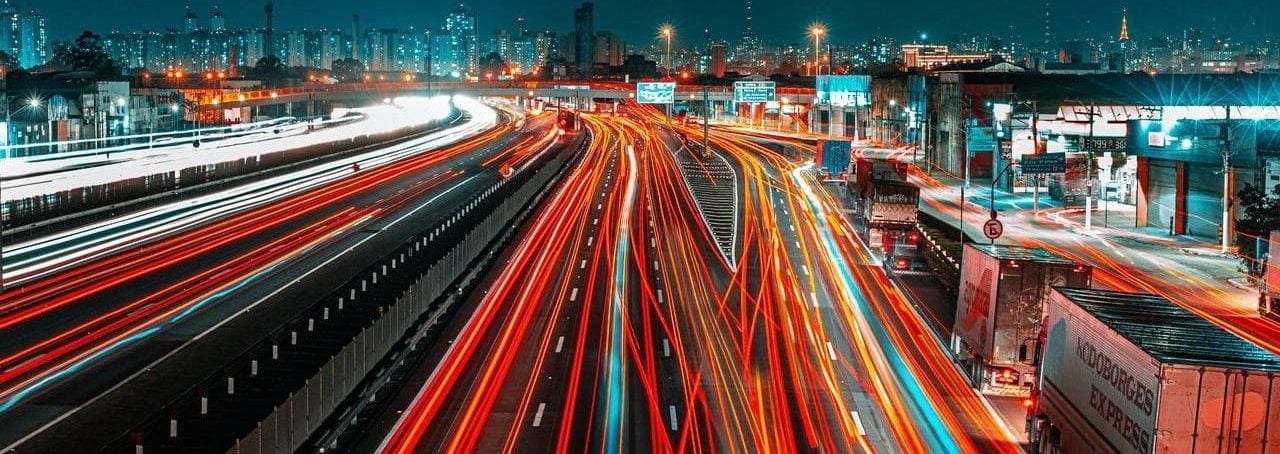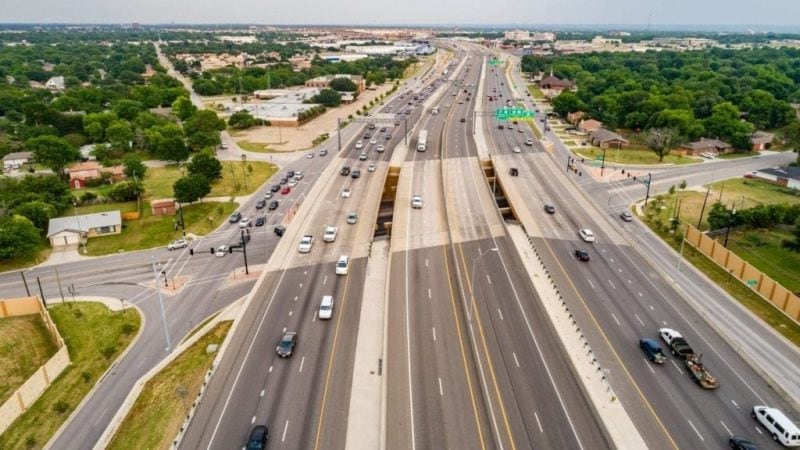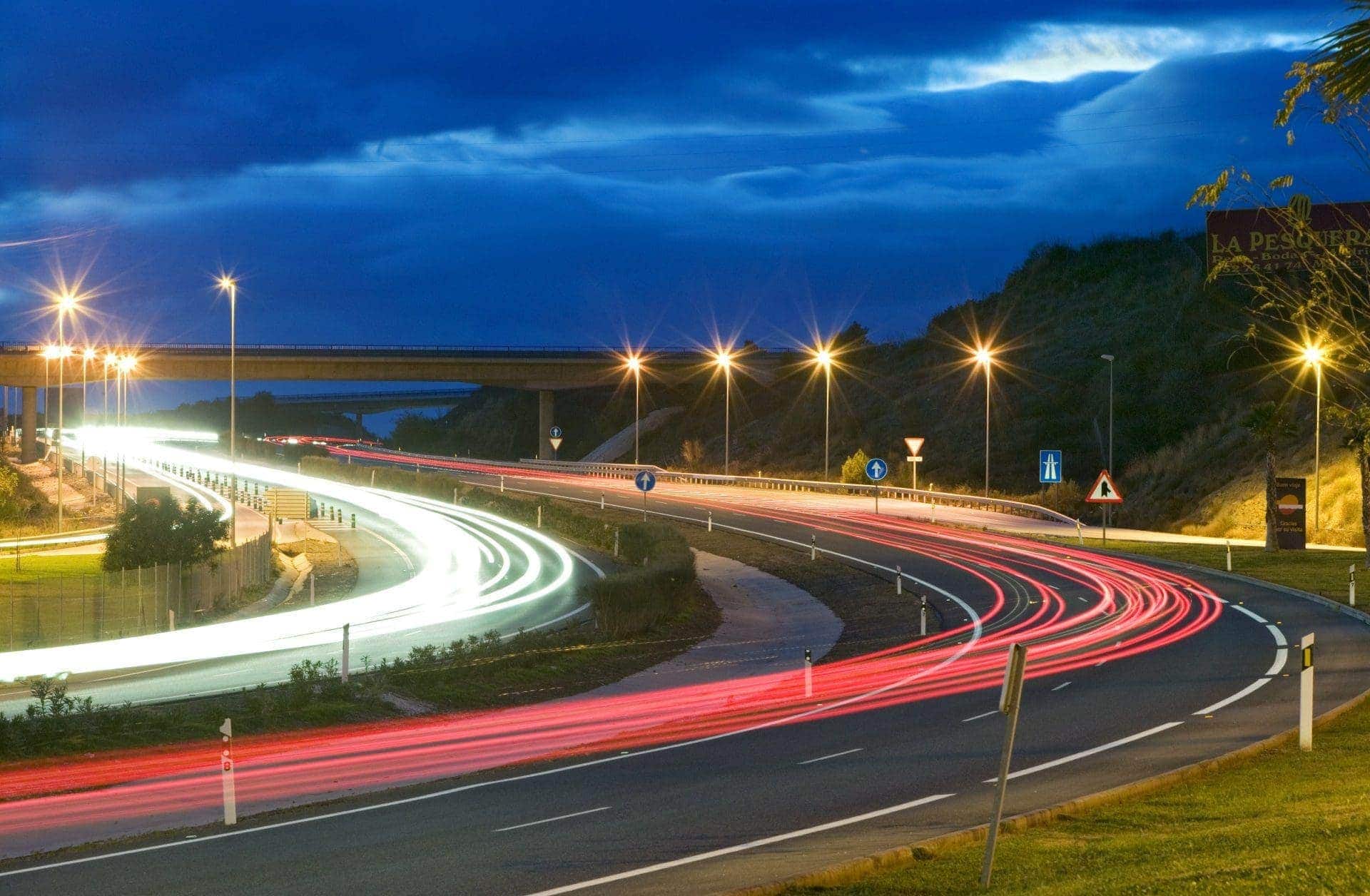
Faster and more reliable journey times, fewer accidents, productive journeys and less stress are all possible destinations on the highways of the future. There is much written and spoken about the emergence of connected and autonomous vehicles (CAVs). But what kind of roads will they drive on?
We are initially going to have mixed traffic, with more traditional vehicles alongside CAVs of differing levels of sophistication. Enhancements to existing roads will need to evolve over time along with technology– it won’t be quite as simple as going from A to B.
What’s next
One of the first things you might see is more highly reflective road markings and road signs, four to five times brighter than now and visible in all driving conditions, both to the human eye and to sensors fitted to CAVs. This is particularly important during adverse weather conditions, think of foggy, rainy conditions or when glare from the sun fades the lines on the road.
We will have more dynamic messaging through full color digital panels, providing road users with real time, contextual and safety information. CAVs on the other hand will automatically receive the data associated with this information – for example, if there is a wrong way driver an alarm will reach them immediately, or in the case of an approaching emergency vehicle, the car will get a message to pull over or slow down in accordance with traffic regulations.

Managed Lanes and highways that control congestion through pricing will become even smarter, more comfortable and safer. Dynamic capacity management, will be used to recommend lanes and speeds of travel to minimize bottlenecks based on machine learning analysis of previous events, to the point of dedicating lanes or even the hard shoulder for special movements under special circumstances in a seamless automated way for the drivers. .
New sensors on the road, just like the ones that are being deployed on autonomous vehicles (Lidars, AI Cameras, etc.) will allow for the identification of all events, incidents, obstacles, etc. that can then be communicated in real time to all users thanks to the latest computing and communication systems, in a way that is trust-worthy for the vehicles and drivers to make those split-second driving decisions.
Finally, infrastructure Digital Twins will allow road operators to advance their innovations even faster by creating virtual environments in which to test and simulate behaviors without impacting the real world.
Further down the road
Further in the future, we can imagine a highway in which some vehicles elect to have the infrastructure move them or teleoperate them from their origin to their destination faster, yet safely, thanks to full visibility of the corridor, or drive in automated mode with their own vehicle systems and the outside certified messages they receive, and with all road capacity managed dynamically.
With high-precision, digital control, we can imagine a future where vehicles travel in supervised zones at 80mph possibly as close as 1m between them. They would all have the ability to interact with infrastructure and with each other, change lanes in unison and safely slow down and stop when necessary.

Autonomous vehicles and their passengers may benefit from faster internet coverage (5G) that will open new lines of additional services and the ability to work and spend more time in the vehicles. If people know they can get from A to B safely with a more or less guaranteed journey time, they can plan to get on with whatever they want – phone calls, messaging, watching a movie, working or even having a massage – with no stress and making road rage a thing from the past.
Things to consider
But be careful, with supervision systems could also come real-time traffic law enforcement – the authorities would know instantly who is speeding, tailgating or driving erratically and take quick and appropriate action, to preserve safety of those vehicles travelling without human drivers at the wheel and all those around them.
Many accidents are caused by poor decision-making by drivers. But centralized control of vehicles and roads could identify patterns and pass information in order to prevent those accidents.
Nevertheless, 100% penetration of autonomous vehicles on our roads is still a long way off, 30+ years, give or take. For now, we have to find more flexible ways to make different vehicles drive side-by-side safely and comfortably, which is a big ask, for which Cintra-Ferrovial are especially well qualified.
How are we preparing infrastructure for this scenario?
AIVIA Smart Roads
Ferrovial and Cintra, together with top-tier global tech firms, are working on AIVIA, a connected road initiative which is helping to manage this transition – maximizing the utility CAVs can bring while providing benefits for all road users. AIVIA Smart Roads aims to create high-speed road infrastructure by developing the blueprint of the sustainable infrastructure of the future for mixed traffic, using cutting edge technology to make travel safer, journey times more reliable and adding value to highway users through enhanced connectivity and the services that come with it..
We are now moving effectively from a vision – designs, thinking and analysis – towards concrete projects in Virginia and Texas, which will be launched operationally in late 2022. Technology trials on those roads start this summer – beginning with high visibility markers, dynamic cats’ eyes, new camera and sensor technology, to be followed by full connectivity coverage for real-time data capture and critical safety messaging and additional services to drivers and their cars.
As Javier Gutierrez, CEO of highway I-66 Express in Virginia puts it:
“Our primary goal on the I-66 is to improve the safety of users. To do this, we are looking to digitize our infrastructure in order to keep drivers and road operators informed at all times. One of the solutions we are working on at the moment, together with VDOT, is the installation of several information panels and cameras with wide visual coverage along the 22 miles of highway, as a way to detect incidents automatically and be able to establish constant communication with connected vehicles traveling on the road.”
How are things going to change in the next 20 to 30 years? Where will the technology be in 2025? How will people’s behaviour, political will and macro-economic factors affect progress?
As always, there are many different drivers to consider.






1 comment
URL
27 of March of 2024
... [Trackback] [...] Read More: blog.ferrovial.com/en/2021/08/the-future-of-road-travel/ [...]